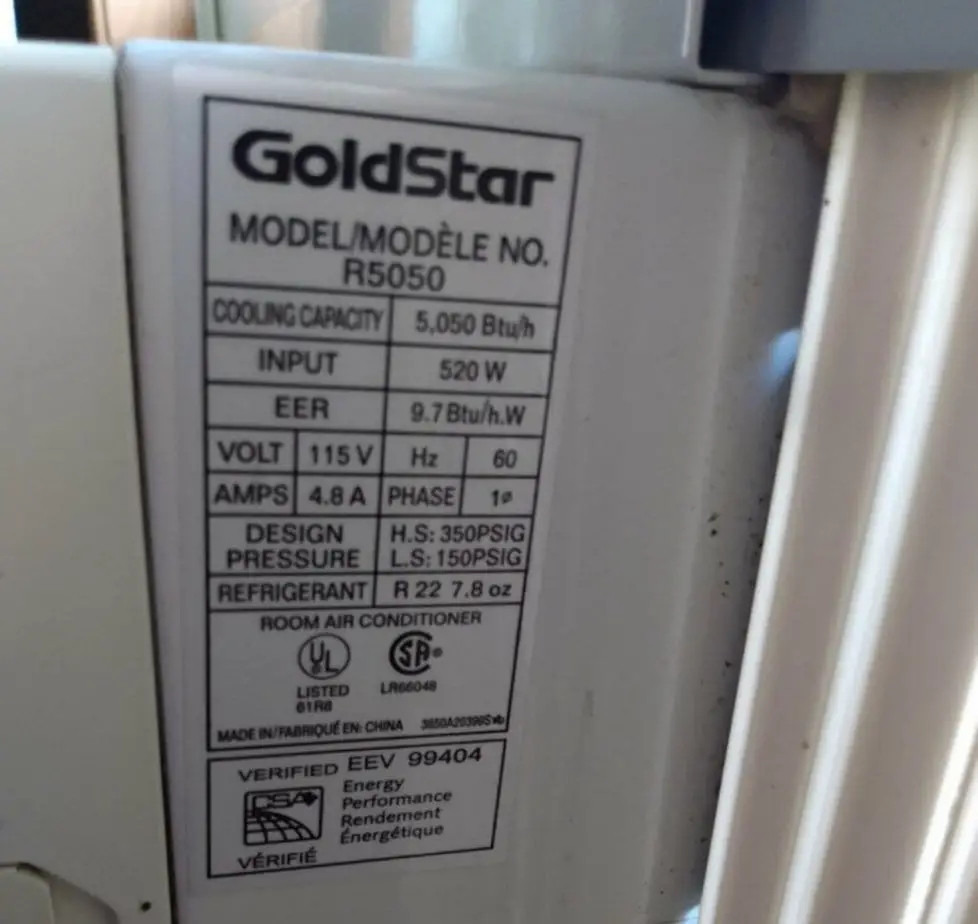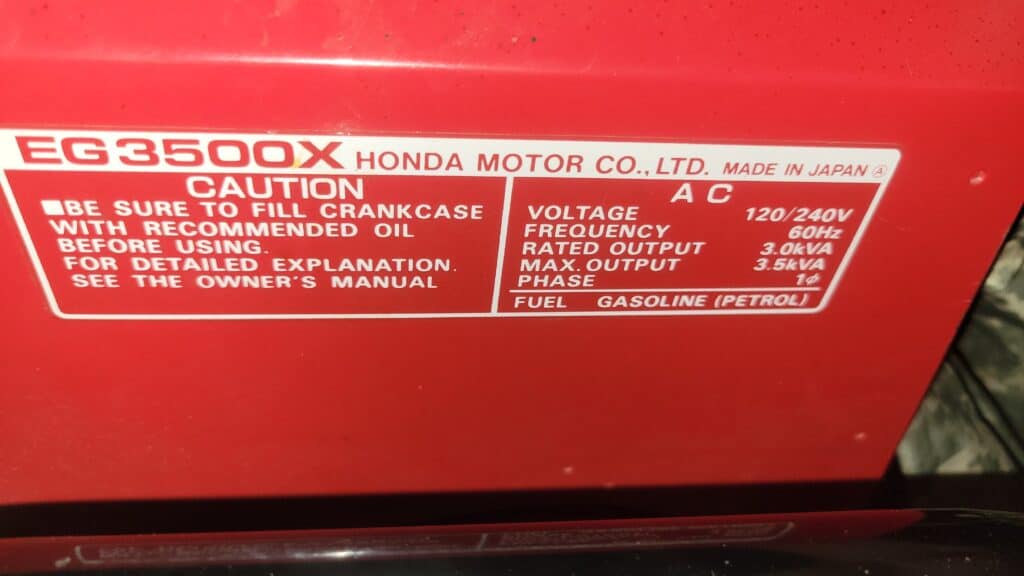Once again the summer heat is upon us. Naturally, all of us like to turn on the AC units and get our house nice and cool. During good times, that’s all good and well.
But what do we do in the event of a power outage — either due to a storm or a planned blackout by the local power supply company? Around the nation this year, there are rumors of planned blackouts and it’s incumbent upon us to take the proper steps to keep our family safe and comfortable.
When power is no longer available from the power company, for one reason or another, our thoughts turn to using a generator to run the window AC units. The common question that most people have is what size generator do I need to run my particular window AC unit?
Stick around and I’ll give you an easy way to calculate how much energy your window units require, and what size generator you’re going to need to power them.
How Much Power Does a Window AC Unit require?
When you buy a new window air conditioning unit, or you just look at the tag on your current one, you’ll generally see that they’re rated in BTU’s instead of amps and watts.
BTU stands for British Thermal Unit, but we don’t need to get into any of that for this discussion. We’re here to simply keep things practical and straight to the point.
As a general conservative rule, the running watts of electricity used by a window AC unit can be calculated by simply dividing the BTU rating by 10. This is what the AC unit uses 99 percent of the time. AC units have compressors which require a spike in Watts for a few seconds just to get started and this number is usually about 3 times the running watts. Adding the two numbers together will tell you the bare minimum size generator needed to power a particular AC unit.
For example, let’s say we were shopping for an AC unit and it was advertised at 8,000 BTU. We take 8,000 and divide it by 10 to get 800 running watts. The additional starting watts will be 2,400 (800 x 3) and the grand total for just starting up the AC unit will be 3,200 watts (2,400 + 800). Therefore, the bare minimum generator that you would need would have a 3kW-3.5kW output.

Below you can look at the table and see common window AC units that are rated in BTUs and you can see their corresponding running and starting watts along with the total for sizing up your generator.
I mentioned above that dividing the BTU’s by 10 (which will result in an energy efficiency rating (EER) of 10) is great for being conservative in your generator selection. However, in the table below I went with an Energy Efficiency rating of about 11 since newer models are getting more and more energy efficient but you could still stick with the EER of 10 if you are unsure and don’t want to be overloading your generator with an optimistic estimate.
Either way, the numbers are going to be a ballpark estimate and will vary based on your make and model of AC unit. Actual running and starting watts may be lower or may be higher.
| Window AC BTU Rating | AC Running Watts | AC Additional Starting Watts | Total Watts to Start AC Unit |
|---|---|---|---|
| 5,000 | 450 | 1,350 | 1,800 |
| 6,000 | 550 | 1,650 | 2,200 |
| 8,000 | 720 | 2,160 | 2,880 |
| 10,000 | 900 | 2,700 | 3,600 |
| 12,000 | 1,080 | 3,240 | 4,320 |
| 15,000 | 1,350 | 4,050 | 5,400 |
| 18,000 | 1,620 | 4,860 | 6,480 |
What Size Generator Do I Need to Power a Window AC Unit
If you’re new to generators just keep in mind that the number that you see advertised on the box or on the side of the generator itself is typically a flattering number for what the generator can really handle when you run it for any real length of time.
Typically, if you see a generator that is rated for 5kW (5,000kW), then the actual running watts of that generator for long-term use may be around 4,300-4,500kW and not the 5,000kW that are advertised. If you look for a small sticker or metal plate on your generator, you’ll see where 5,000kW is the peak running watts for the generator, and the manual will generally say that you should not maintain this output for longer than 15-30 minutes or you’ll risk damaging the unit. However, that generator can probably handle the 4,300-4,500kW just fine for days if needed.

Sometimes generators can also handle a surge for a few seconds (from the starting watts of an appliance, like a fridge or window AC unit) that well exceed the peak running watts if the generator is built by a reputable company.
For example, I had a generator that had the running watts of 1,500, peak watts of 2,000, but the max output was 2,600 for a few seconds only.
I tell you all of this so that if your window AC unit (plus any other demands you plan on putting on the generator) is on the borderline of where you go from one size of generator to another, then you may want to size up just to be safe.
You can always turn items on one at a time to structure things better for your generator.
For instance, if you only had a 2,000 watt generator and you wanted to power a 5,000 BTU window AC unit and a 1,000-watt microwave as well, then you would need to turn the AC unit on first and let it get running. Once it’s up and running, you could technically run the microwave for a short period of time.
The total starting watts of the AC unit will be about 1,800 according to the table above, but after a few seconds it will drop down to 450. Once that’s done, you could turn on the 1,000-watt microwave to make the total demand on the generator 1,450-watts.
If, however, you started the microwave first with a 1,000-watt load and then turned on the AC unit, you’d add an additional 1,800-watts on the generator for a total of 2,800 watts and you’d trip the power from the generator by exceeding the maximum output.
Below is table indicating the bare minimum generator that you would need to power the most common window AC units. If you have other appliances (especially those with starting watts) you’ll need to take those into consideration. I have an article here that details the simple formula that you can use to calculate which generator size you’ll need for multiple appliances.
| Window AC Unit by BTU | Minimum Generator Size Needed in Watts |
|---|---|
| 5,000 | 2,000 – 2,500 |
| 6,000 | 2,500 |
| 8,000 | 3,000-3,500 |
| 10,000 | 3,500 |
| 12,000 | 5,000 |
| 15,000 | 7,000 |
| 18,000 | 7,000 |
Now, if you have multiple window AC units to power, the table below will give the minimum generator size you’ll need to accomplish that task. Remember that when you power multiple window AC units that you must turn one on at a time, let it get established, and then turn on another. If you turn them all on at the same time, the additional starting watts will overload the generator.
When in doubt, always go bigger!
| Number of Window AC Units to be Powered | Minimum Generator Size Needed |
|---|---|
| 2 x 5,000 BTU | 3,500 Watts |
| 3 x 5,000 BTU | 4,000 Watts |
| 2 x 8,000 BTU | 5,000 Watts |
| 3 x 8,000 BTU | 6,000 Watts |
| 2 x 10,000 BTU | 6,500 Watts |
| 3 x 10,000 BTU | 7,500 Watts |

